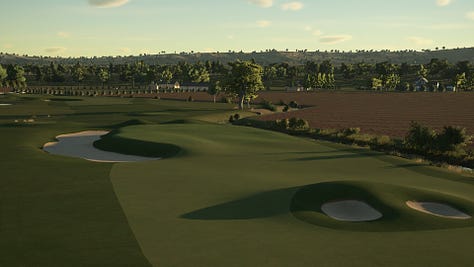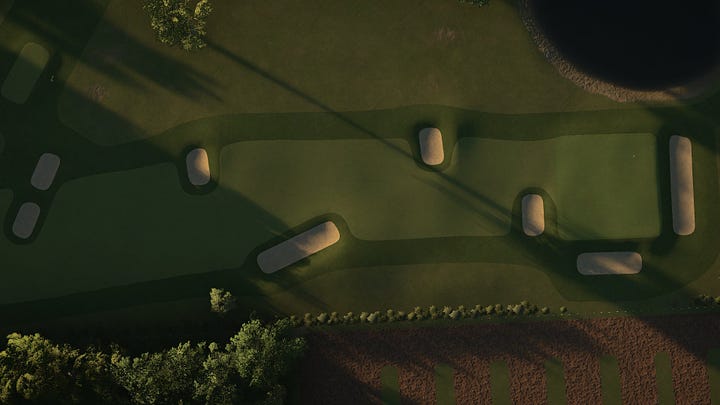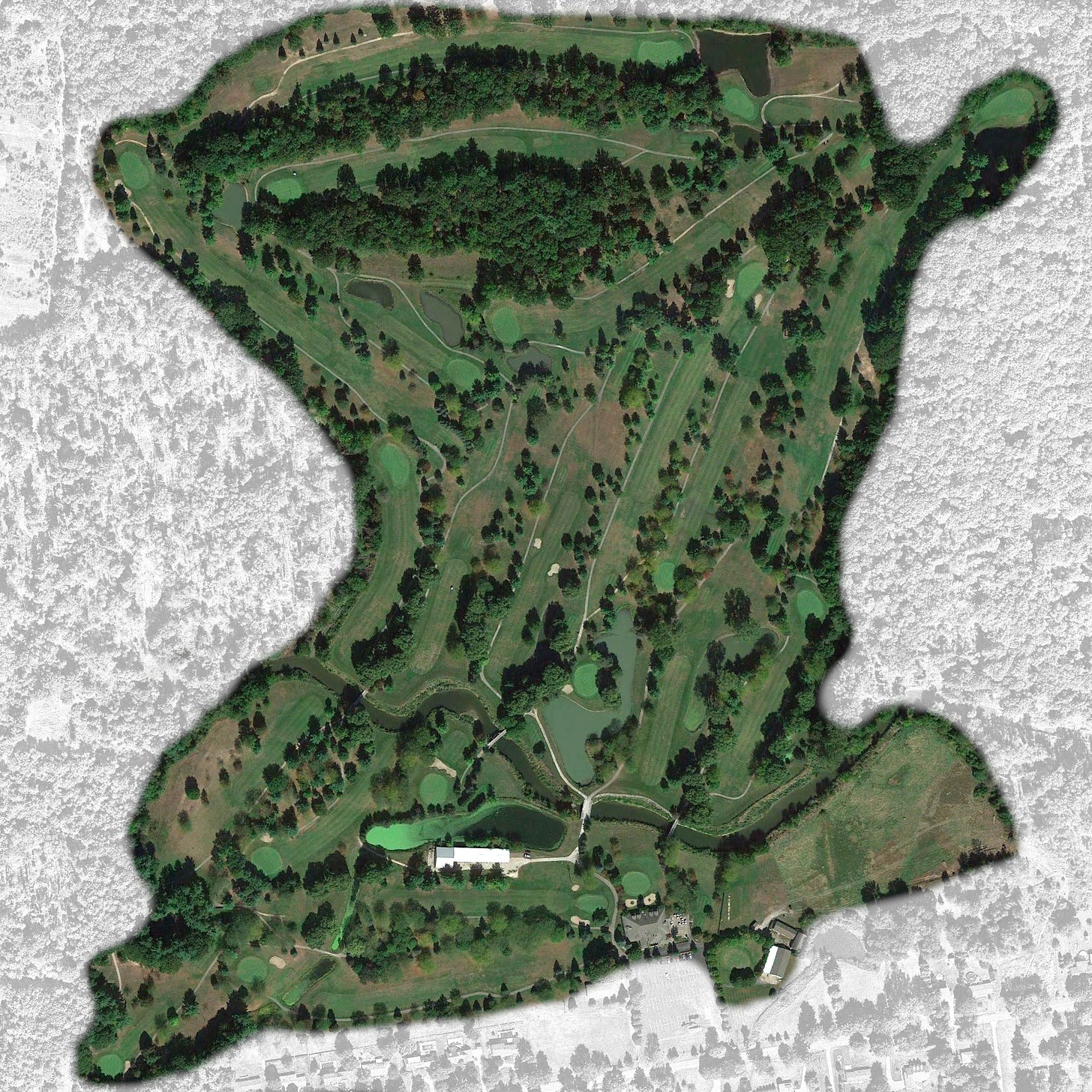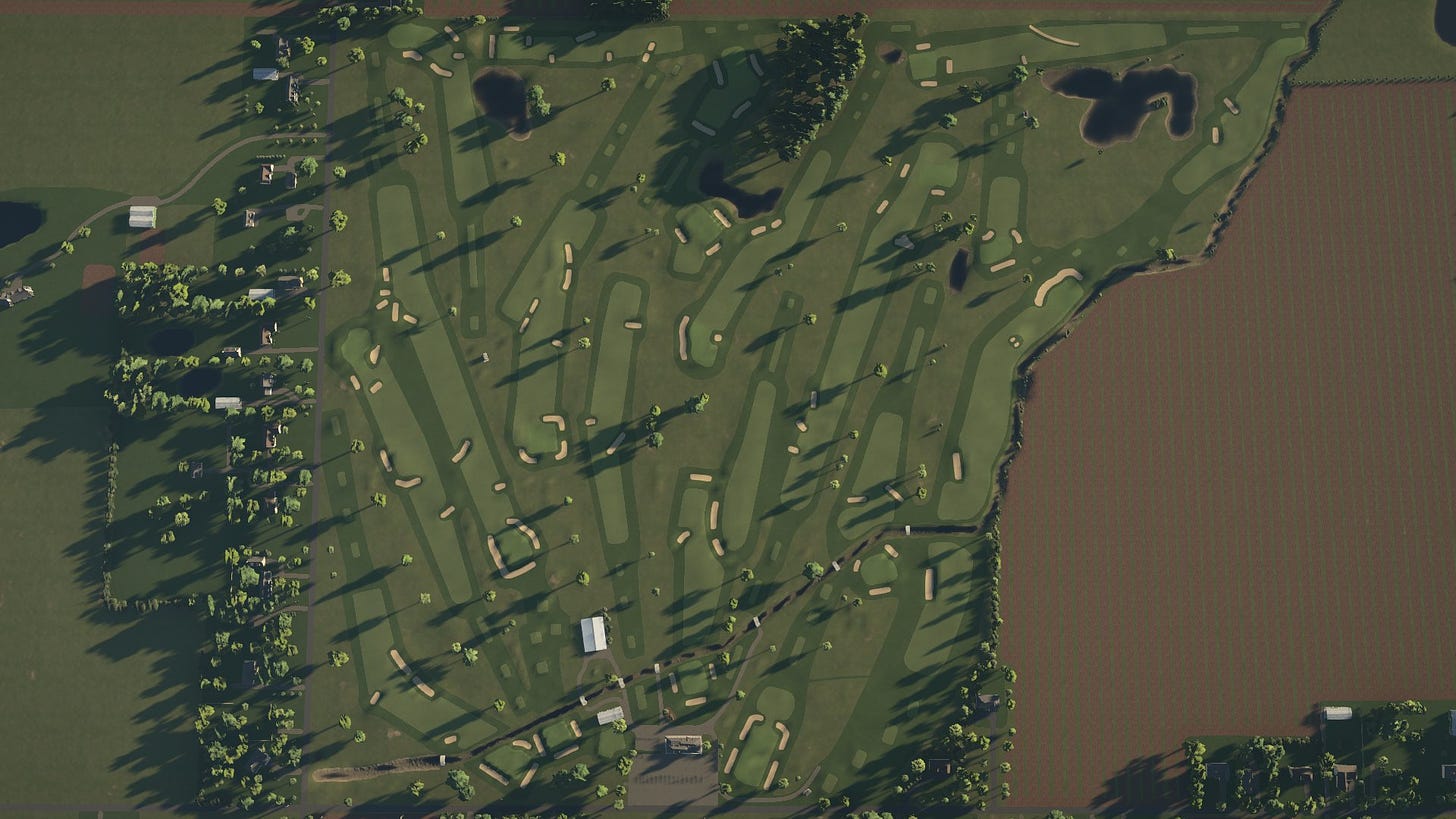I can’t believe I’ve written 10 of these already!
It’s old news at this point, but I recently found out that back in 2020 both Kimberly Oaks in St. Charles, and Twin Bridges in Merrill closed. Both courses shared the same owners, and both served small communities located on the outskirts of the tri-cities. I had much more experience at Kimberly, which opened in 1970 and was the home course for the golf team at St. Charles High School. I only vividly remember a few of the holes, but I recall that the course beat me up every time I played it.
Twin Bridges was a much newer course, opening in 1995 and becoming the home site for the Merrill High School golf team. I remember even fewer details about this course, other than being disappointed at how extremely bland it was. This was back before I had really played much golf outside of the tri-cities, when every course was amazing to me. That is saying something.
The owners cited a bad year of rain as one of the reasons for closing both courses, and a skim of the last few reviews from 2019 seem to confirm that the courses were in poor condition that year, if not borderline neglected. Despite the wishes of the sellers, who indicated that they would prefer the properties remain golf courses in the future under new ownership, real estate doesn’t quite work that way. While recent aerial imagery shows the courses haven’t been developed, it also shows that they’ve remained closed.
Neither course will be missed for its stellar design or amazing property, but as courses serving small communities, their loss is likely being felt already. Having played most of the public courses on offer in the area throughout my childhood, I feel for the golf community there and the lack of excellent playing options, or even a depth of decent tracks to choose from. Collectively, the courses of the Great Lakes Bay Region serve a population of around 375,000, a region that possesses enough golf enthusiasm to support an early extension of the Dow Great Lakes Bay Invitational through 2029.
The region’s biggest obstacle to good golf, unfortunately, is the land. It features some of the flattest, lowest lying topography found anywhere in the Mitten. So what can be done here?
Kill-(and Rebuild-)a-course: Twin Oaks GC in Freeland
We never want to see a golf course close in Michigan. And for this edition of Kill-a-Course (see the 1st edition), I’m not just going to critique Twin Oaks GC in Freeland, which frankly is too easy of a target. Instead, I’m going to present some ideas for how it could serve a better purpose in its location in the middle of the tri-cities.
As always, here is the disclaimer acknowledging that behind every course, good, bad, or indifferent, there are countless numbers of people pouring everything they have into the operation. This is not meant to target or demean those people, but rather serve as motivation to help improve the course and the overall golf scene in the state. And frankly, it’s fun to dunk on a bad golf design.
I have a soft spot for Twin Oaks. Maybe a softer spot than it actually deserves. But it’s more or less where I began playing golf. It’s the course that I’ve played more times than any other, by a wide margin. My first youth golf league took place at Twin Oaks, a Friday morning summer league that I would get irrationally excited about playing each week. As I got older, we often extended our 9-hole round to 18, and sometimes 27 holes. Outside of the league, the course gave us a voucher to play 9 holes for $5 whenever we wanted, an insanely generous deal regardless of the quality of golf.
It wasn’t until I got a little older, first joining the Freeland Junior High golf team, and then starting a job at Apple Mountain, that I really got to compare the course against other options in the state. “Wait,” I thought, “does Twin Oaks stink?”
I regret to inform, it stinks.
The course is built on former farmland. Not fun farmland, like Calderone in Grass Lake, but dead flat farmland. A ditch runs through and then alongside part of the property, but it rarely comes into play. In addition to one lone bunker among 27 holes, the other hazards are man-made ponds. The owner of Twin Oaks loved (loves? I’m not sure if we are still on the original owner or not) man-made ponds. So much so that he added them alongside the driveway to his house, and continued to expand the ones on the course through the 70’s and into the 90’s. The ponds smell bad and are usually covered in muck. They don’t add much strategically, and perhaps I’m wrong here, but don’t seem to add much in regards to drainage or irrigation, either. I honestly don’t understand their purpose. Maybe to break up the monotony of the land? Maybe because someone told the owner that “good” golf courses feature water hazards?
So the holes are flat, and generally straight. If you want to know about the greens, place a dinner plate on a table in front of you. Now grab the plate at 12 o’clock, and tilt it slightly towards you. Except for a wacky 18th green, what you are seeing is the exact model of all 26 other greens on the course. That makes reading the greens quite simple, putting on them difficult, and chipping to them, should you miss the green pin high or further, quite impossible.
Ok, so the course stinks. I already know what the counter argument is. It’s a cheap course, mostly for beginners or people who aren’t very good at golf. What’s the big deal? Not every course needs to be a championship test.
This I agree with and understand, but I have to paraphrase an argument from Andy Johnson of the Fried Egg. If you are trying to entice people to the golf of game, are you going to start out by showing them the blandest, most boring product that you can offer? If you were trying to convince a friend to check out a new band, would you start out by playing them the worst songs in the band’s catalog? No. Golf for beginners doesn’t need to be boring, just as interesting golf doesn’t have to mean that it’s expensive.
As you may know by now, I’m always eager to learn more about courses that find an interesting way to present affordable golf. One such course that has been on my radar for several years now, and which looks more intriguing to me each time I see it, is Charleston Muni in South Carolina.
If Charleston Muni hasn’t been on your radar, takes a few minutes to get the story behind the restoration of the course, and look at some videos of the place. Some recommendations:
Reads: Fried Egg article - Golf Digest article
Watch: Fried Egg video - No Laying Up Strapped video - Always Bring the Sticks video
TL;DR version. The course is in low country, right next to a river, and would often flood at high tide. When the city decided to fix the course, architect Troy Miller took a cue from nearby Seth Raynor-designed courses CC of Charleston and Yeamans Hall to implement a bold, “template” style of hole design, but at an affordable rate.
Michigan doesn’t have much of a history with the C.B. MacDonald and Seth Raynor template style of golf course. The most recent, and only, example of such a course in the state is the South Course at Arcadia Bluffs, which was influenced in design and style by MacDonald’s Chicago Golf Club, but doesn’t follow a strict adherence to the templates. The course has been well-received since its opening in 2018, with some golfers enjoying it and rating it more highly than the Bluffs course next to Lake Michigan.
What Michigan does have is plenty of flat, low-lying land in the Great Lakes Bay Region. If any place is ripe for an experiment with bold golf design on uninspiring land, but targeted for wide public use, it has to be Twin Oaks.
Another thing you may know by now, when presented with an intriguing “What If?” question about a golf course restoration or transformation that seems like a long shot, I kick off a digital model of the project for inspiration. I did such a thing a few years back, and can unequivocally say that turning the present day Twin Oaks course into an 18-hole Seth Raynor-inspired design has been one of the most fun and rewarding projects I have built to date.
I’ll state it again, the tri-cities area is desperately in need of some interesting golf, and I believe the right kind of project could kickstart a massive amount of interest and enthusiasm in the region. Presenting architectural interest while preserving playability and affordability are the keys to an initiative like this. Here’s how I think this would be achieved:
The 27-hole Twin Oaks routing features tight corridors, with mostly short par 4s and few par 5s. It’s too many uninteresting holes for the property. 18 holes allows for a big ballpark feel, great for presenting options to all levels of players.
Large greens and large fairways, with a wide variance in tee locations, is ideal for beginners. Most greens also feature a front opening to feed the ball in along the ground.
Twin Oaks currently features almost zero areas of long grass, consisting entirely of irrigated and mown areas. Reducing the holes opens up more area that can be maintained as native vegetation, helping reduce inputs.
The bold, pushed up green styles and steep-faced bunkers are ideal for flat topography, much like you would see at a course like CC of Charleston, for providing visual cues across the landscape.
Strategic template designs and a back set of tees challenge better players. As beginners improve, they can begin to figure out the templates and understand the design philosophy behind each.
Maybe this part is a stretch, but there isn’t a lot of golf history associated with the region, and the site doesn’t have any notable golf history attached to it. A template design in the style of a Raynor or MacDonald course may spark a curiosity from golfers to learn more about these men and their courses, creating an immediate connection between the place where they play golf and the history of the game. For example, you would be hard pressed right now to make a connection between Twin Oaks and the Old Course at St. Andrews. A Road hole template, however, becomes an instantly recognizable link between the two.
Are these good arguments, and is a vision like this even feasible? I would need help answering those questions. But listen, the whole thing would be really freaking cool!







It doesn’t have to look exactly like I made it, or follow this exact concept. I’m sure an architect could find faults with this design and improve it, and that’s fine. But as for the overall concept, I’ll keep striving as long as I can to try and make it, or something similar, come to fruition.
If you would like to see more of the course in action, below is a video of the course from the PGA 2K21 game, recorded by a user in the game. This isn’t my video, and there is definitely some language involved, fair warning (can always mute it if needed). But it shows off the course pretty well.
Bay City Country Club
In one piece of (hopefully) good news for the region, the former Bay City Country Club, turned Saginaw Valley Public Golf Course, is now under new ownership and has been given its original name back. That alone is a positive start - the Saginaw Valley name was horrendous. But the word I’ve received is that while it remains open to public play, the new owners have raised rates and are putting work into bringing the course back up to a higher standard. Mid-season weekend rates will still only top out at $59, though, making it an absolute bargain if it was located somewhere in the Detroit Metro area.
The course is a 1965 Art Johnson and Larry Packard design. Packard, known for his Copperhead course at Innisbrook in Florida, also designed Leslie Park in Ann Arbor, a course that I enjoy. I caddied at BCC once when I was maybe 13 or 14, the first and last time I ever carried someone’s bag. I can’t recall many of the holes on the course, but with my normal golf experiences coming at Twin Oaks, I remember being wildly intimidated by the whole scene.
We’ll see how this new direction goes for the club. A mid- to upper-scale experience in the area would go a long ways for Bay County golf. There is a lot of low cost, low-end golf in the county, with maybe only Bay County GC being one that I would make any kind of effort to play, so this one really needs to hit. They’ve already made one whiff, though, on a logo that looks like it came out of a stock photo selection.
They need to get started on a Sasquatch logo and corresponding merch ASAP!











I would love to revive a golf course that has been closed. Unfortunately I'm not rich lol. I've always thought about course without bunkers. Only grass bunkers and burms.